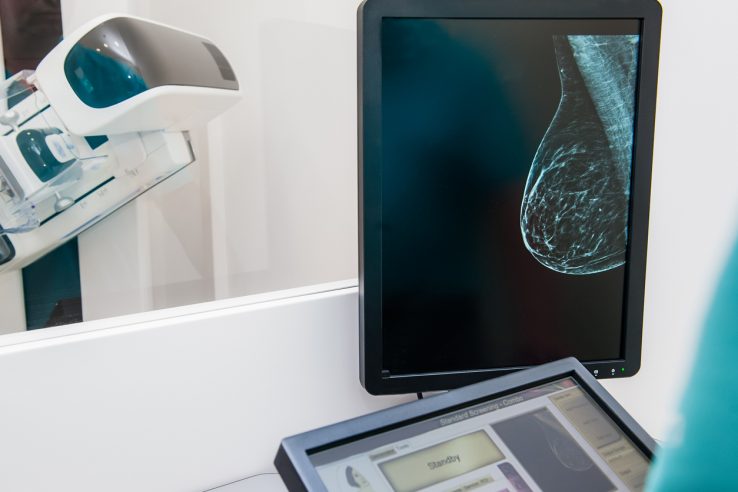by Rebecca Biason
Female survivors of childhood cancers who have been treated with thoracic radiation, such as survivors of Hodgkin’s lymphoma (HL), have a higher risk of developing breast cancer later in life compared to the general  population.
population.
To mitigate this risk, current guidelines in Ontario recommend that female HL survivors undergo annual same-day mammography and MRI screenings starting at age 30, the same for all high-risk women. However, a new study led by Jill Furzer and Lauren Tessier, PhD students at the Institute of Health Policy, Management and Evaluation (IHPME), has found that mammographic and MRI screening for this group is a costly strategy that provides very limited additional benefits in preventing cancer compared to having an MRI alone.
“Mammograms are not as sensitive as MRI in their ability to look for new tumors, especially in women under age 50, and there is often a low compliance rate in this population of women,” said Tessier. “Our findings show that the guidelines should be more specific to an individual’s specific risk profile and that survivors of pediatric HL would likely benefit from starting screening earlier than age 30.”
What started as a course project for Furzer and Tessier’s graduate studies in health services research at IHPME quickly became a spark that spanned beyond the boundaries of the classroom to become a study inreal-world application for these emerging health leaders.
Read the study in The Journal of the National Cancer Institute
Furzer and Tessier conducted their study by modifying an existing breast cancer natural history model, for HL survivors with a high risk of developing breast cancer. This model starts with HL survivors at age 25, who are then simulated through different screening strategies starting at either age 25 or 30 and include MRI, mammogram or both. The life expectancy and quality of life of these individuals and the associated health care costs were calculated based on the frequency of screening, the timing of cancer detection and the cost of treatment, if breast cancer is detected.
In their findings, Furzer and Tessier found that screening with both an MRI and mammogram at age 30 is on average more expensive and less effective than screening using MRI only. They also found that at age 25, adding an MRI to mammography screening also added significant costs without a meaningful change on life expectancy or quality of life for the survivor.
“Within cost-effectiveness analysis in health care, there is also a value judgement,” adds Furzer. “We are trying to determine what treatments or screening strategies provide value in terms of quality adjusted life years for these patients, while also ensuring system sustainability in terms of public funding for these services.”
Senior author and assistant professor at IHPME Petros Pechlivanoglou, notes that this kind of a study is also imperative for the field of pediatric oncology as a whole.
“In pediatric oncology there are positive effects in the short-term because we prevent children from relapsing in their disease, however it has been recognized by many that there are long-term implications that can be treatment related,” says Pechlivanoglou who is also a scientist in Child Evaluative Sciences at Sick Kids. “That is why studies like this are useful in estimating the long-term effects over a life time for childhood cancer survivors, including costs to the health system.”
With the study’s finding that cancer screening guidelines would benefit from some revisions, especially for HL survivors, Furzer and Tessier point out that any call for change from the status quo, especially in health care, can be tough.
“There can be a strong emotional reaction when talking about cost in health care,” says Furzer. Tessier concurs, “It is not our goal to only focus on costs, but to create a better health care system and outcomes for everyone who uses it now and in the future.”
Related News

Sign up for IHPME Connect.
Keep up to date with IHPME’s News & Research, Events & Program, Recognition, e-newsletter.
Subscribe to Connect Newsletter
Get in Contact
Communications
Marielle Boutin
Email Address: ihpme.communications@utoronto.ca





